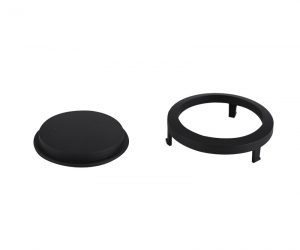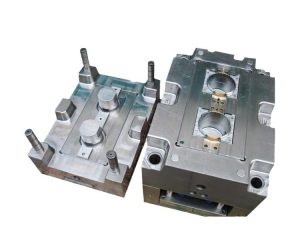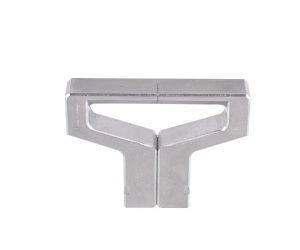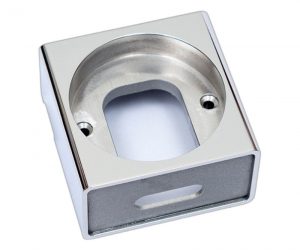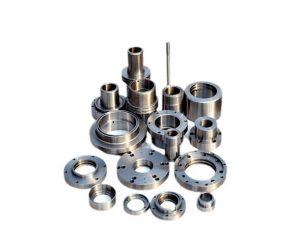Plastic injection molding resins are essential to the injection molding process, serving as the primary materials for creating complex, precise, and high-quality plastic components. The process begins with the resin being heated to a molten state, injected into a mold cavity under pressure, and then cooled and solidified to form the final product. The choice of resin plays a critical role in determining the performance, quality, and versatility of the molded part. Different resin types offer unique properties that cater to specific industry needs, from mechanical strength to chemical resistance and heat tolerance.
This exploration delves into the diverse types of injection molding resins, their defining characteristics, and their applications in various industries. Understanding how resin choice impacts the molding process allows manufacturers to optimize part design, material properties, and production efficiency, ensuring the final products meet both functional and aesthetic demands.
Understanding Resin Types and Varieties
Navigating the Resin Landscape
The world of plastic injection molding resins is vast, with a wide array of options to suit different applications. Broadly, these resins can be divided into two main categories: commodity plastics and engineering plastics, with specialized options like thermoplastic elastomers (TPE) and bioplastics further expanding the possibilities.
- Commodity Plastics: These are typically low-cost, high-volume resins that are easy to process and offer adequate properties for everyday applications. Examples include:
- Polyethylene (PE): Widely used for packaging, bottles, and bags due to its flexibility and low cost.
- Polypropylene (PP): Known for its chemical resistance and lightweight nature, commonly used in automotive parts, consumer goods, and packaging.
- Polystyrene (PS): Offers good rigidity and clarity, often used in disposable items, toys, and food containers.
- Engineering Plastics: These resins provide higher performance characteristics, such as enhanced strength, heat resistance, and durability, making them suitable for more demanding applications:
- Acrylonitrile Butadiene Styrene (ABS): Popular in automotive, electronics, and consumer goods for its toughness, impact resistance, and good surface finish.
- Polycarbonate (PC): Known for its high strength and optical clarity, it’s commonly used in applications requiring transparency, such as eyewear lenses and automotive headlamp lenses.
- Nylon (Polyamide, PA): Renowned for its strength, abrasion resistance, and flexibility, making it ideal for automotive parts, industrial components, and textiles.
- Specialized Resins:
- Thermoplastic Elastomers (TPE): These materials combine the properties of rubber and plastic, offering flexibility, soft touch, and resilience. TPEs are used in applications like gaskets, seals, and soft-touch handles.
- Bioplastics: These sustainable materials, derived from renewable sources like corn or sugarcane, are becoming increasingly popular in environmentally conscious manufacturing. Notable examples include PLA (Polylactic Acid) and PHA (Polyhydroxyalkanoates), used in applications ranging from food packaging to medical devices.
Properties that Define Resin Performance
Unveiling the Key Attributes
The performance of plastic injection molding resins is determined by a combination of mechanical, thermal, and chemical properties, each of which influences the final product's functionality and durability.
- Mechanical Properties:
- Tensile Strength: A measure of how much force a material can withstand while being stretched or pulled. High tensile strength is crucial for parts subjected to mechanical stress.
- Impact Resistance: Determines a material’s ability to resist fracture or deformation under high-impact conditions. This is especially important for automotive parts and consumer electronics.
- Elongation at Break: This property indicates how much a material can stretch before breaking, which is important for parts that need to flex without cracking.
- Hardness: The material’s resistance to indentation or scratching, which can be vital for wear-resistant components like gears and bearings.
- Thermal Properties:
- Glass Transition Temperature (Tg): The temperature at which a resin transitions from a rigid, glassy state to a more flexible, rubbery state. Materials with higher Tg values are better suited for high-temperature applications.
- Heat Deflection Temperature (HDT): The temperature at which a material deforms under a specified load. Resins with high HDT are essential for parts exposed to heat, such as automotive under-the-hood components.
- Chemical Properties:
- Chemical Resistance: The ability of a resin to withstand exposure to various chemicals without degrading or losing functionality. This is critical for components used in medical devices, pharmaceutical packaging, and industrial machinery.
- UV Resistance: Some resins are formulated to resist ultraviolet (UV) light degradation, which is important for outdoor applications like automotive exterior parts and garden equipment.
- Other Considerations:
- Density: Influences the weight of the final part and affects material costs.
- Dimensional Stability: How well the material retains its shape and size after cooling. Resins with high dimensional stability are crucial in precision applications where tight tolerances are needed.
Applications Across Industries
From Automotive to Consumer Goods
The wide range of properties exhibited by various resins makes them suitable for a variety of industries, where each sector demands specific qualities for its products.
- Automotive Industry:
- Lightweight materials like Polypropylene (PP) and Polyamide (PA) are crucial for reducing vehicle weight and improving fuel efficiency.
- ABS and Polycarbonate (PC) are used for interior and exterior parts, providing strength, durability, and impact resistance.
- High-performance resins like PBT (Polybutylene Terephthalate) and Polyphenylene Sulfide (PPS) are used in under-the-hood components for their heat resistance.
- Consumer Goods:
- PP and PS are used for packaging, containers, and toys due to their low cost and ease of processing.
- TPE and PVC are often used for products requiring flexibility, such as gaskets, sleeves, and rubber-like seals.
- Medical Devices:
- Biocompatible resins like Polycarbonate (PC) and Polypropylene (PP) are used for products such as syringes, surgical instruments, and drug delivery systems due to their sterilizability and biocompatibility.
- TPE is used for flexible components like catheters and wound care products.
- Electronics:
- ABS and PC are favored for electronics casings and components due to their strength, electrical insulation properties, and aesthetic quality.
- Polyphenylene Oxide (PPO) and Polyetherimide (PEI) are used for parts that require thermal stability and electrical insulation.
- Packaging:
- PET (Polyethylene Terephthalate) is widely used for bottles, food containers, and trays due to its clarity, strength, and chemical resistance.
Material Selection Considerations
Navigating the Decision Matrix
Choosing the right resin for an injection-molded part involves considering various factors, including:
- Mechanical and Thermal Requirements: Is the part exposed to high temperatures or mechanical stress?
- Cost: Can the resin meet performance requirements while staying within budget?
- Molding Feasibility: Is the resin compatible with the molding process in terms of flowability and cooling rates?
- Environmental Impact: Is sustainability a priority, and if so, should bioplastics or recyclable resins be considered?
- Regulatory Compliance: Does the resin need to meet specific industry standards, such as FDA approval for medical products?
Balancing these factors is key to selecting the resin that best fits both functional and production needs.
Impact of Resin on Injection Molding Process
The Nexus of Material and Manufacturing
The resin chosen for injection molding influences the entire manufacturing process. Its melt viscosity determines how easily it flows through the mold cavities. Resins with higher viscosities may require higher injection pressures or longer cycle times. Similarly, thermal properties affect cooling times; resins that cool too quickly may require adjustments to mold design or heating elements to maintain consistent part quality.
Additionally, material shrinkage during cooling can affect the final part's dimensions, requiring careful mold design and process control to maintain tight tolerances.
Innovations and Trends in Resin Technology
Evolving with Advancements
The world of plastic injection molding resins continues to evolve, with new developments focused on improving material properties, reducing environmental impact, and enhancing processing capabilities.
- Reinforced Resins: The integration of nanoparticles and fibers into resins has created reinforced composites with significantly enhanced strength and durability, suitable for demanding applications in aerospace, automotive, and construction.
- Flame-Retardant Resins: With the
increasing need for safety in electronics, automotive, and construction, flame-retardant materials are becoming more prevalent.
- Biodegradable and Recyclable Resins: As industries face growing environmental pressures, there is an increasing shift toward using bioplastics and recyclable resins to create sustainable products that align with circular economy principles.
Real-World Examples of Resin Utilization
Showcasing Success Stories
- Automotive: The adoption of ABS and PC for exterior and interior automotive components has improved both safety and aesthetic quality while reducing vehicle weight and enhancing fuel efficiency.
- Consumer Electronics: The use of ABS for smartphone casings and Polycarbonate (PC) for laptop bodies provides a balance of lightweight, durability, and electrical insulation, critical for these devices’ performance.
Conclusion: Navigating the Resin Landscape in Injection Molding
Mastering the Art of Material Selection
In conclusion, plastic injection molding resins offer a broad spectrum of materials, each with distinct properties and applications. The ability to navigate this resin landscape and select the right material for a specific purpose is a vital skill for manufacturers and designers. By understanding the interplay between resin properties, application requirements, and molding process conditions, stakeholders can optimize product performance, reduce costs, and stay ahead of evolving industry demands. With continuous innovation in resin technology, the future of injection molding holds exciting possibilities for even more efficient, sustainable, and high-performing products.
